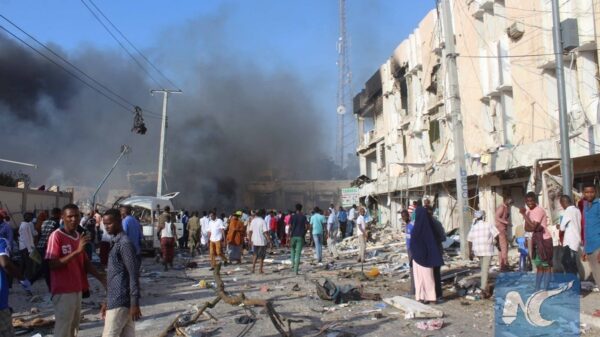NAIROBI, August 26 – Nearly 10 years ago, the Kenyan Government commissioned an international consultant, CPCS Transcom, to undertake an “Options Study” and recommend the best way to salvage the cash-strapped Kenya Railways Corporation (KRC).
The consultant recommended concessioning as opposed to other alternatives such as management contracting, separation of infrastructure from operations and outright sale. The privatisation model was subsequently adopted by the Cabinet in June 1998.
Four years later in July 2002, the Government engaged the International Finance Corporation (IFC) to undertake a due diligence on KRC, design a transaction structure and prepare tender documents.
The Ugandan government also decided to undertake the concession jointly with Kenya, and the deal was advertised internationally.
The concession would involve contracting the private sector to operate the railway services for up to 25 years. The Government would, in every quarter, receive 11.1 percent of all revenues accruing from the privatised business.
A minimum investment of US$5 million per year for the first five years was anticipated from the winner and in case of a joint bid; the lead investor must have at least 35 percent of the shares. The winning bidder must offer 40 percent shareholding to Kenyan and Ugandan investors by the end of the 5th year of operations.
Interested bidders needed to have a net worth of at least US$35 million or alternatively provide financial commitment from an investment-grade bank for the said sum.
They were also to have proven experience in running a railway system with annual freight volume of at least 250 million net-tonne-kilometres and 300 route kilometres either as rail operators or having worked as consultants on the same.
In the contract, performance by the winning bidder was to be measured in freight volumes as well as minimum investment.
But a performance review from the past 18 months shows that the concession has not met the minimum target and the concessionaire is unlikely to meet projections for the second year.
Prepared by the Kenya Railways Corporation (KRC) that is monitoring the concession’s progress on behalf of the Government, KRC says it does not approve of RVR’s investments made in the recent past as they do not largely qualify as investments under the contract.
The corporation which conceded its wagons and train engines to RVR laments that the South-African led consortium is simply asset-stripping and generating revenue and profit at the expense of maintenance and improvements to the railway.
Lack of investment has led to a reduction in freight traffic with less tonnage being hauled by RVR than before the take-over of operations of the two railways in November 2006.
Due to lack of maintenance, availability of RVR’s rolling stock – inherited from KRC – has declined since the start of the concession with the daily average availability at 54, down from 63.
Wagons in operation have also dropped from 2,330 in November 2006 to approximately 1,902 currently, further undermining RVR’s capacity to increase throughput as envisaged.
The quality and quantity of passenger services has also declined. RVR has, contrary to the concession agreement, failed to operate all passenger services. The contractual target at end of June 2009 is 1.888 billion net-tonne-kms against the system’s capacity of 12 billion net-tonnes-kilometres.
At the start of the concession, KRC moved 1.5 billion net-tonne-kilometres per year. But in the first 12 months of operation, the privatised rail has moved only 1.4 billion net-tonne-kilometres.
RVR is also on a collision course with its employees over what the workers termed as poor terms of service, delayed salary pay in recent months as well as arbitrary dismissals by the concessionaire.
Two years down the bumpy road, 38 percent of the 3,400 workers transferred to RVR from the KRC and the Uganda Railways Corporation are yet to be confirmed. Instead, 600 of them have already been fired under unclear circumstances, further straining relations between the two.
Only recently, RVR was unable to promptly pay for the July salaries; there were nationwide unrests that saw the company loose 10 days of productivity after both passenger and freight trains failed to take off.
RVR has also failed to pay concession fees for 10 straight months. It owes KRC rent arrears for office space at the railways headquarters in Nairobi.
The company has also not paid for spares and fuel handed to it in 2006.
KRC is concerned that without an alternative means of undertaking operations and maintenance, the concessionaire’s capacity to meet minimum maintenance standards is in serious doubt.
In dire need for massive but delayed investments, rail users say the track and rolling stock are in a worse state. Officials at Kenya’s only port in Mombasa say the share of rail business has dipped by half to a paltry six percent, down from the 12 percent performance by KRC.
RVR is a consortium of local and foreign investors all of which were to raise $28 million at the time of taking over the rail operations – as a condition precedent before disbursement of a US$64 million loan from two international financiers; a German development bank, Kfw and the International Finance Corporation, the World Bank’s private sector lending arm.
Lenders have disbursed just US$10 million and announced it now prefers changes for new shareholders to be admitted to inject fresh capital and expert management to the business.
IFC has recommended that the best option for RVR is for the shareholders to fully subscribe their equity amounting to US$7 million (about Sh400 million). These remaining amounts will be enough to compensate for the yet –to-be-disbursed Kfw loan.
IFC has said it would be wiling, subject to an agreement to a new management, to disburse US$2.7 million, both amounts being adequate for RVR to continue operations for the next few months while a negotiated solution is being sought with the selected consortia of investors.
In a move to unlock the loan, the RVR board has pledged to inject a further US$10 million through a rights issue, by the end of August.
RVR now says without the loan forthcoming, it has been forced to run operations and maintenance through internally-generated revenues.
This unexpected challenge coupled with intense pressure to improve performance has led to inclusion of international operators, Australia’s Toll Holdings Group.
Renowned as one of the world’s leading integrated logistics providers, the firm has reached a new agreement allowing RVR to leverage Toll’s considerable global logistics network and give it access to Toll’s proprietary processes including strategic planning. It has seconded new Chief Executive Kevin Whiteway along three other top officials to manage RVR’s operations, Finance and Infrastructure functions.
RVR will also have access to Toll’s back office support including finance, risk and training expertise. In a cost-cutting effort, RVR will now enjoy purchasing power for items like fuel, insurance, locomotive and rolling stock spare parts.
Until RVR embarked on the rescue plans, the contract was headed for a cancellation.
If the concessionaire is expelled, options for management would be an Open Access System (OAS) where the Government maintains the permanent way and the private sector players operate and deliver services. A good example of this is the current Magadi Soda trackage rights agreement between Konza and Mombasa.
The OAS is the privatisation models all countries in the European Union, US, Canada and Mexico and Japan have adopted.
It is recommended that Uganda also adopts open access to allow seamless service provision between the two countries and their dependant rails.


































